Tutors source code package (tutors-src.zip 920KB)
Source package + Windows executables (tutors-win32.zip 1.24MB)
Source package + Mac OS X universal binaries (tutors-macosx.zip 1.2MB)
|
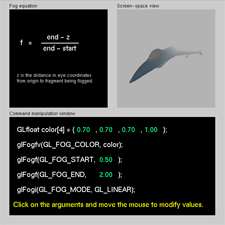
|
|
(click on image to enlarge it)
|
The fog tutorial program (shown at right) demonstrates how to use depth
cueing (or fog) in OpenGL. It includes command panels that allow dynamic
update of the parameters for linear, exponential and exponential2
fog functions. The fog color can also be dynamically changed.
|
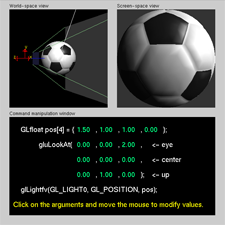
|
|
(click on image to enlarge it)
|
The lightposition tutorial program (shown at left) demonstrates how lighting
position is effected by the viewing transformation. The order in which the
light position and the viewing transform are established is configurable, as
are the parameters for the position and transform.
|
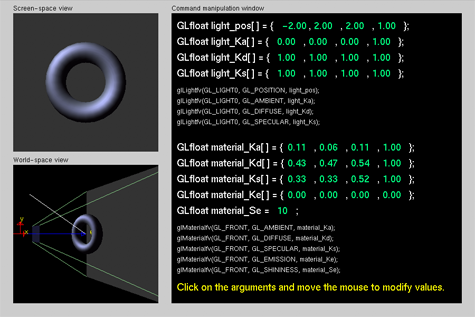
|
|
(click on image to enlarge it)
|
The lightmaterial tutorial program (shown above) demonstrates how OpenGL
lighting and material properties interact and effect each other. All
material & light properties are tweakable. A second command panel allows
spotlight parameters & attenuation factors to be changed.
|
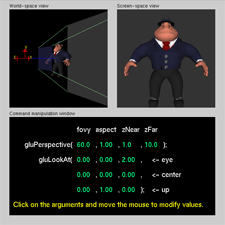
|
|
(click on image to enlarge it)
|
The projection tutorial program (shown at right) demonstrates how the many
types of projection transformations work. A command panel is included for
gluPerspective(), glOrtho() and glFrustum(). In addition, the viewing
transform can be modified via the gluLookat() function.
|
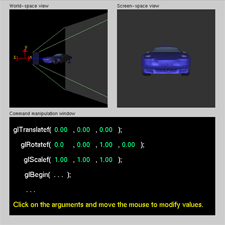
|
|
(click on image to enlarge it)
|
The transformation tutorial program (shown at left) demonstrates how the
basic transformations of rotate, translate and scale operate in OpenGL.
The order of the transforms can be changed to see how that effects rendering.
|
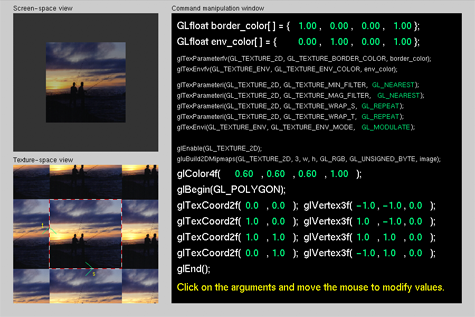
|
|
(click on image to enlarge it)
|
The texture tutorial program (shown above) demonstrates how OpenGL texturing
works. Specifically, the texture coordinates for a polygon are provided for
manipulation as are the polygons coordinates themselves. The texture
parameter & environment attributes are tweakable. A separate command panel
allows manipulation of the texture matrix.
|
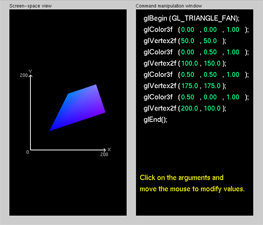
|
|
(click on image to enlarge it)
|
The shapes tutorial program (shown at right) demonstrates how the many types
of primitives work. A command panel for each primitive type is included.
This tutorial was written by
Mason Woo.
|













